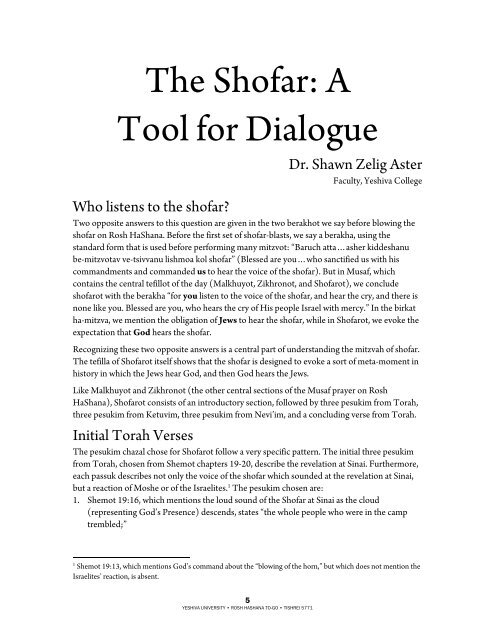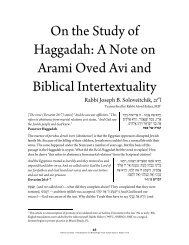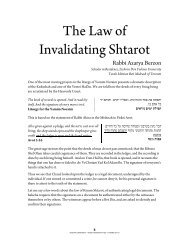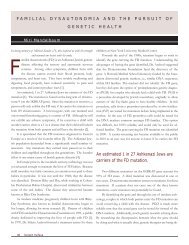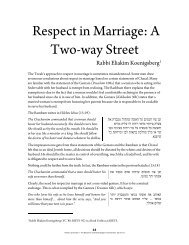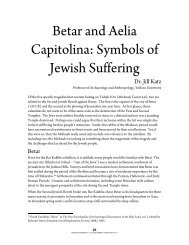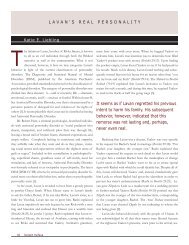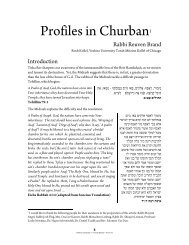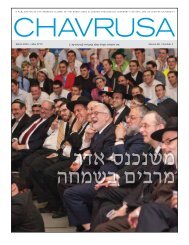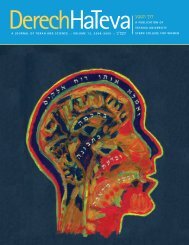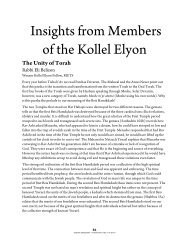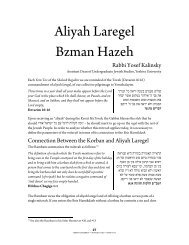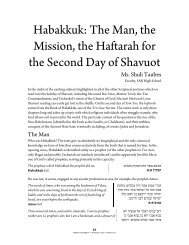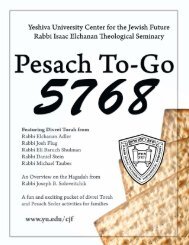YESHIVA UNIVERSITY • ROSH HASHANA TO-GO ... - YUTorah.org
YESHIVA UNIVERSITY • ROSH HASHANA TO-GO ... - YUTorah.org
YESHIVA UNIVERSITY • ROSH HASHANA TO-GO ... - YUTorah.org
Create successful ePaper yourself
Turn your PDF publications into a flip-book with our unique Google optimized e-Paper software.
The Shofar: A<br />
Tool for Dialogue<br />
5<br />
<strong>YESHIVA</strong> <strong>UNIVERSITY</strong> <strong>•</strong> <strong>ROSH</strong> <strong>HASHANA</strong> <strong>TO</strong>-<strong>GO</strong> <strong>•</strong> TISHREI 5771<br />
Dr. Shawn Zelig Aster<br />
Faculty, Yeshiva College<br />
Who listens to the shofar?<br />
Two opposite answers to this question are given in the two berakhot we say before blowing the<br />
shofar on Rosh HaShana. Before the first set of shofar-blasts, we say a berakha, using the<br />
standard form that is used before performing many mitzvot: “Baruch atta…asher kiddeshanu<br />
be-mitzvotav ve-tsivvanu lishmoa kol shofar” (Blessed are you…who sanctified us with his<br />
commandments and commanded us to hear the voice of the shofar). But in Musaf, which<br />
contains the central tefillot of the day (Malkhuyot, Zikhronot, and Shofarot), we conclude<br />
shofarot with the berakha “for you listen to the voice of the shofar, and hear the cry, and there is<br />
none like you. Blessed are you, who hears the cry of His people Israel with mercy.” In the birkat<br />
ha-mitzva, we mention the obligation of Jews to hear the shofar, while in Shofarot, we evoke the<br />
expectation that God hears the shofar.<br />
Recognizing these two opposite answers is a central part of understanding the mitzvah of shofar.<br />
The tefilla of Shofarot itself shows that the shofar is designed to evoke a sort of meta-moment in<br />
history in which the Jews hear God, and then God hears the Jews.<br />
Like Malkhuyot and Zikhronot (the other central sections of the Musaf prayer on Rosh<br />
HaShana), Shofarot consists of an introductory section, followed by three pesukim from Torah,<br />
three pesukim from Ketuvim, three pesukim from Nevi’im, and a concluding verse from Torah.<br />
Initial Torah Verses<br />
The pesukim chazal chose for Shofarot follow a very specific pattern. The initial three pesukim<br />
from Torah, chosen from Shemot chapters 19-20, describe the revelation at Sinai. Furthermore,<br />
each passuk describes not only the voice of the shofar which sounded at the revelation at Sinai,<br />
but a reaction of Moshe or of the Israelites. 1 The pesukim chosen are:<br />
1. Shemot 19:16, which mentions the loud sound of the Shofar at Sinai as the cloud<br />
(representing God’s Presence) descends, states “the whole people who were in the camp<br />
trembled;”<br />
1 Shemot 19:13, which mentions God’s command about the “blowing of the horn,” but which does not mention the<br />
Israelites’ reaction, is absent.


